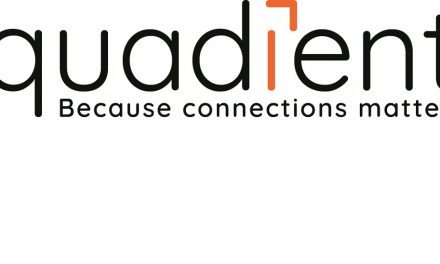
Keeping physical mail relevant in a GDPR world

Phil Hutchison, Director, Neopost Limited
General Data Protection Regulation and the digital age – does physical mail still have a role to play? By Phil Hutchison, Director, Neopost Limited.
On 25th May 2018, the General Data Protection Regulation (GDPR) came into force. Introduced to provide assurances to individuals around how their personal data is collected, processed and stored, the business world had been gearing up for its introduction for a while. In contrast, many consumers were unaware of it and were left scratching their heads at the glut of ‘let’s stay in touch’ emails that had suddenly populated their inbox.
In a nutshell, GDPR gives more power to individuals over how personal information is used by companies. They can now request access to any information held on them, ask for it to be rectified, question what third-parties it has been shared with and even demand its deletion. Ensuring compliance requires companies to look at their internal processes and, in some cases, completely overhaul them. For instance, data can now only be collected once the individual (data subject) has provided consent, so firms have to ensure that they can provide proof that all the data they hold, even that held pre-GDPR, was collected with approval.
For consumers, GDPR provides an opportunity to cut ties with firms they no longer want to hear from, as well as an enhanced confidence that those that they do want a relationship with are looking after their information. For businesses, it brings into question how communications – particularly those with untouched prospects – can continue to be effective.
Does direct mail still have a role in today’s digital world?
There’s no denying that digital communications have become the go-to option for many. Consumers communicate via social media, email and messaging apps and they expect businesses to do the same. Of course, this is beneficial for organisations too, with digital channels providing a more instant – and often cheaper – path to customers.
Perhaps then, it’s easy to see why some believe that physical mail has had its day and are choosing to deprioritise it or stop using it all together. But, in doing so, they’re closing the door on an incredibly effective communications channel.
More so than its counterparts, physical mail is able to evoke an emotional reaction. According to Royal Mail’s MarketReach survey, 70 percent of individuals feel valued and appreciated on receiving it, 65 percent say they’re likely to give it their full attention, and 70 percent think better of the company that sends it. It’s hard to think of an email generating a similar response.
Managing GDPR and physical mail
When deployed correctly, physical mail remains an effective part of the communications mix. Instead of deprioritising it, businesses must ensure it’s provided with the same levels of management that is provided to the other channels. It’s when businesses can deliver a multi-channel strategy that enables the customer to decide how they wish to be contacted, satisfaction increases as there is a seamless flow of dialogue across all touchpoints. Take these benefits and combine them with GDPR’s promise of greater data transparency, and businesses have a real opportunity to build strong lasting relationships.
Another benefit of physical communications is that some forms bypass GDPR entirely. Unaddressed door drops, for instance, contain no personal information so are not bound by the stringent requirements. Additional benefits include that they represent the most effective method of reaching the highest number of households in a desired location and, on average, correspondence delivered this way is kept for 38 days – meaning there’s plenty of time for it to be read.
The twofold benefit of technology: compliance and enhanced communications
Despite the deadline having passed, the Information Commissioner’s Office (ICO) has reassured firms that the first year will see it take more of an advisory role. As long as companies have a plan in place and are seen to be taking the steps towards compliance, fines will be unlikely. This follows on from the organisation revealing that it was inundated with calls from small businesses seeking last-minute advice in the week leading up to the enforcement date.
Whatever confusion still exists, what is beyond doubt is that technology will play a key role. Not only will it drive compliance, but adopting tools that can enhance communications will ensure that the process continues to be effective. Output Management Software (OMS), for instance, centralises outgoing communications, making it far easier to handle and personalise for increased engagement; while also compiling personal data into a manageable database where it can be simply accessed and edited. The benefit is two-fold.
What other tools deliver effective to the communications mix?
Personal information includes postal addresses – obviously a key necessity for sending direct mail. When addresses are incorrect or out-of-date, not only are they no longer effective, but individuals can request for them to be rectified. Adopting solutions that cross-check addresses against databases of the Royal Mail is a simple way of ensuring records remain relevant; but businesses still require the capability to easily select and modify all appropriate entries so they can edit and respond to requests in real-time.
Process automation is another important ability as it can ensure compliance while also reducing the resources required to complete certain activities. For example, GDPR specifically requires customers to opt-in to having their information collected and used for communications, and automated mailing software can ensure that ‘opt-in’ boxes are included on the relevant correspondence. Similarly, automated envelope filling saves a huge amount of time and ensures that items are always going to the correct recipient and not accidentally sent to others.
Individuals can also request that companies stop processing their information. This doesn’t mean that information has to be deleted from databases, more that the business has to stop sharing it with third-parties or using it to contact the subject. Again, automated software can help greatly as it can assign ‘do not sends’ to records which are flagged if a user attempts to contact an individual that has requested to be left alone for the time being.
Ultimately, GDPR has been introduced to empower individuals with greater control over their data, but businesses shouldn’t view the new requirements with fear. Compliance is all about respect for peoples’ privacy and, therefore, all personal data must be treated with respect. Manage it in the right way and listen to customers’ preferences. Use the communications channel they want and don’t contact them if they’ve requested to opt-out, for instance. When this approach is embraced and used to drive the adoption of relevant communication tools, data handling best practices and increased transparency – it can only be a positive.
Both physical and digital communications have a role to play, and it’s the organisations that can effectively deliver a seamless multi-channel strategy, which has GDPR at its core, that will soon begin establishing lasting relationships.












